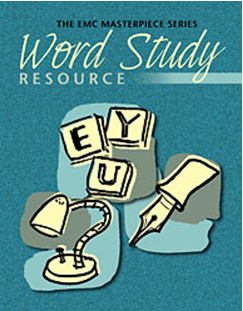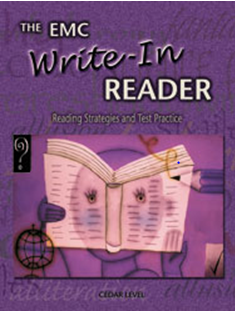 Do you have students in your summer school classes who need to work on their vocabulary skills? The EMC Word Study Resource is designed to offer teachers meaningful ways to incorporate word study into the language arts classroom. This resource includes Teaching Tips that can help you encourage curiosity about words, model word attack and spelling strategies, and make vocabulary study effective. Each resource for grades 6-12 contains thirty lessons, designed to be used weekly, that cover a broad range of topics from etymology to context clues to spelling patterns. By using these lessons in conjunction with The EMC Mirrors & Windows program or other language arts materials, you will help your students become better readers, writers, speakers, and spellers.
Do you have students in your summer school classes who need to work on their vocabulary skills? The EMC Word Study Resource is designed to offer teachers meaningful ways to incorporate word study into the language arts classroom. This resource includes Teaching Tips that can help you encourage curiosity about words, model word attack and spelling strategies, and make vocabulary study effective. Each resource for grades 6-12 contains thirty lessons, designed to be used weekly, that cover a broad range of topics from etymology to context clues to spelling patterns. By using these lessons in conjunction with The EMC Mirrors & Windows program or other language arts materials, you will help your students become better readers, writers, speakers, and spellers.Here's a list of features that you will find in the Word Study Resource:
- Each lesson begins with a Word of the Week, a term that students may find particularly meaningful, interesting, or enjoyable to pronounce.
- As new concepts are introduced, students are given the chance to practice what they are learning in Try It Yourself activities.
- Just For Fun activities get students to play with words, reminding them that language can be fun and interesting.
- Tip boxes in the margins of each lesson clarify definitions, offer additional information, and provide helpful suggestions.
- A metacognitive What Did You Learn? activity closes each lesson, giving students the chance to monitor their understanding.
- At intervals throughout the program, Time Out for Test Practice sections ask students to use what they’ve learned to answer sample standardized test questions.
- An appendix with Word Parts Charts that list common prefixes, word roots, and suffixes, along with their meanings and examples of their use is included, as well as a chart of common combining forms.
Give your students the vocabulary skills they need
to be successful readers, writers, and speakers!




